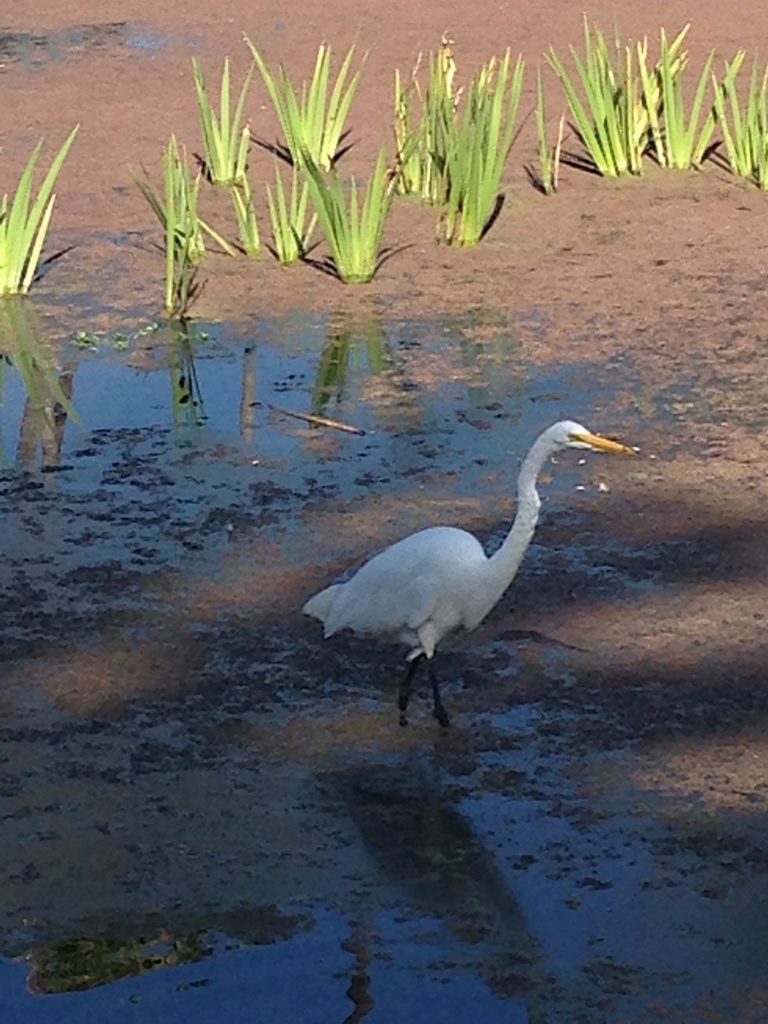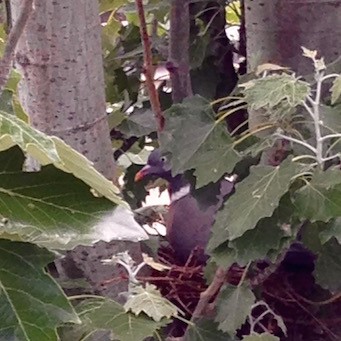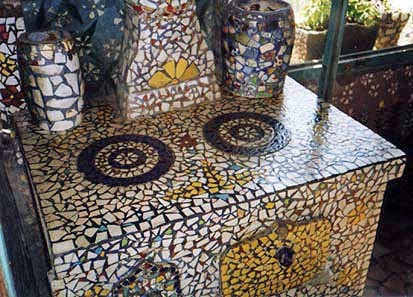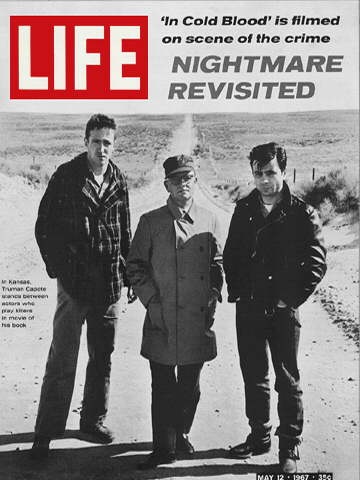When I remember, I add to my collection, a running list of souvenirs from my daily walks. For instance, among yesterday’s finds down at Echo Park Lake:
A model posing in diaphanous turquoise
A pair of lovers: exceptionally tall, exceptionally short
A man with a guitar
A man with a flute
A man doing sun salutations
A girl with scarlet dreads
Three Muskovy ducks
A bunch of mallards
Lilies, voluptuous, a field of them, waving and blushing
And the other kind, too, purple pinwheels on the water
One heron
Two egrets
Coots and baby coots
Turtles and baby turtles
A boy on a bike
A runner with green shoes
A cat on a leash
An all-white pigeon
 A running list, as I say, and the day’s adds not so remarkable, really— though I can never get enough of the great egret; and she was closer than usual, too; I saw the breeze ruffling her feathers, and the orange of her beak.
A running list, as I say, and the day’s adds not so remarkable, really— though I can never get enough of the great egret; and she was closer than usual, too; I saw the breeze ruffling her feathers, and the orange of her beak.
Then, too, there was that pigeon— the white one, very rare—I tried to take a picture with my phone, but up jogged the joker in green shoes, and she was gone.
The point is, though, I keep on collecting. But why? What to do with all these bits and pieces? Must I do something with them? Must I know what I’m doing?
Once upon a time (but this is true), over 80 years ago, there was a man named Raymond Isidore, a Frenchman (you can google the guy), who lived with his wife in Chartres (home of the famous cathedral), roughly an hour by train from Paris; a straight shot from the Gare de Montparnasse, which—on a Saturday this past July— was a ten minute walk from our rented one-bedroom on Rue St. Jacques. A miracle, it seemed, to be standing in front of the Cathedral at Chartres in less than two hours. Actually, a miracle that we caught the train at all, distracted as we were that morning by the scene out the window over the kitchen sink, where our pigeon was more visible than usual. Our pigeon, I say, because the day we moved in, we watched her build her nest twig by twig; since then—for three weeks and a day—we’d been waiting. More accurately, she’d been waiting: such a patient bird, so devoted, so watchful, always there, almost hidden in the fork of that tall, skinny tree, like so:
 Every morning we wondered, would it happen today? Tomorrow? Would the eggs hatch before we ourselves had to fly away home? We’d noticed: our bird had been sitting higher and higher on the nest—but for how long had that been true, we wondered? And did it mean she’d produced more eggs? Wouldn’t she have laid them all at once? Reluctantly, we tied our laces, pocketed wallets, tickets, keys. We had that train to catch—we were meeting friends for lunch in Chartres.
Every morning we wondered, would it happen today? Tomorrow? Would the eggs hatch before we ourselves had to fly away home? We’d noticed: our bird had been sitting higher and higher on the nest—but for how long had that been true, we wondered? And did it mean she’d produced more eggs? Wouldn’t she have laid them all at once? Reluctantly, we tied our laces, pocketed wallets, tickets, keys. We had that train to catch—we were meeting friends for lunch in Chartres.
Once there and outside the tiny station—two tracks only—we found our way up the hill to the Cathedral (“You won’t be able to miss it,” said our friend, and she was right, there it was, kissing the clouds), where we marveled at the spires, the buttresses, the saints, the angels—and all of it erected something like 900 years ago. Nine hundred years—almost a millennium. How, I kept asking? How did they hoist these enormous stones one on top of the other? How long did it take? (Decades.) At what point did they build the staircase, 300 steps: not all at once, surely, but when and how? Before? After? On their way up? At lunch (a salade composée; I wish I had a picture) I forgot about my questions. After lunch, with plenty of time to spare before catching the train back to the city, our friends drove us to Raymond Isidore’s house, La Maison Picassiette, two kilometers east.
Isidore, born and raised in Chartres, was a molder: by profession he made parts, from molds (this seems important to note ), before, due to health considerations, he became a sweep at the local cemetery. In 1929, he bought a small plot of land on which he built a little house for himself and his wife. Nine years later, so goes the story, he was out for a walk one afternoon when he found some bits of broken pottery—and he picked them up. I’ve done that, haven’t you? Long before I started my running list, I saved things: pebbles, pinecones, shells. They’re all over the house, in saucers and boxes and tins; on night tables and tucked in the corners of shelves and drawers. We even bought a glass lamp, the kind you can fill, in which we arranged a random assortment of stones and driftwood and marbles. Also a couple of pool balls and a postcard or two and a pair of old spectacles—artless and arty, but definitely not art, no—not adding up to much and not meant to. Raymond Isidore, though: did he have any idea that first afternoon? If so, how did he know where to start? Or was he somewhere in the middle when he realized what he was up to? And then—if that’s how it was —how did he manage to stay the course as if it weren’t a course at all?
 But I haven’t explained: Over the next 30 years (he died in 1964), Raymond Isidore tiled every surface of his house: not just the front stoop and the garden path—but the walls, inside and out; also the lamps, the bedframe, the counters—the stove! The sewing machine! (His wife’s)—the tables and chairs and doors, all of them part of this enormous mosaic: a portrait here, a landscape there; animals and people and places, some familiar—the Mona Lisa, Chartres Cathedral itself, and the Tour Eiffel—others of his own invention entirely; whales, giraffes, monkeys, birds, flowers, elephants, clowns, moons, stars, meadows, oceans: a series, a serial, a collection of linked stories—which turn out to be the story of a life! Raymond Isidore’s life, created day by day out of disparate fragments of glass, china, crockery, all colors, kinds, textures; now dark, now light, now serious, now whimsical, not only in content but also in craft: here and there you can find a spout from a teapot, or a handle from a jug winking from a beam or a sill.
But I haven’t explained: Over the next 30 years (he died in 1964), Raymond Isidore tiled every surface of his house: not just the front stoop and the garden path—but the walls, inside and out; also the lamps, the bedframe, the counters—the stove! The sewing machine! (His wife’s)—the tables and chairs and doors, all of them part of this enormous mosaic: a portrait here, a landscape there; animals and people and places, some familiar—the Mona Lisa, Chartres Cathedral itself, and the Tour Eiffel—others of his own invention entirely; whales, giraffes, monkeys, birds, flowers, elephants, clowns, moons, stars, meadows, oceans: a series, a serial, a collection of linked stories—which turn out to be the story of a life! Raymond Isidore’s life, created day by day out of disparate fragments of glass, china, crockery, all colors, kinds, textures; now dark, now light, now serious, now whimsical, not only in content but also in craft: here and there you can find a spout from a teapot, or a handle from a jug winking from a beam or a sill.
Did Isidore, aka Picassiette—from the words “piquer,” to steal, and “assiette,” a plate (though the connection to Picasso is not unintentional)—have art in mind? Or was he just compelled to…to… To what? To recycle? To give purpose to his days? To leave something behind? To make things add up somehow?
So it must have been for the builders of the Cathedral at Chartres. Apples and oranges, maybe: in that case there was no master architect, no overall vision in anybody’s head. But the construction of the church was accomplished by teams of master craftsmen. And as far as they knew it was a work-in-progress: no one of them could have been there from beginning to end—which maybe tells us something similar about the relationship between work and art, and why and for whom; though what it tells us I’m not exactly sure.
Meanwhile, what am I to do with my lists? How to mold them? How to spring them from their molds? (See, I knew it was important: the fact of his having been a molder—) What does one image—one souvenir—have to do with another? I haven’t a clue: I’m looking for clues—that’s what I’m doing on my daily walks, isn’t it?
Back to our Saturday field trip. We returned to the city on the late side and warmed up some leftovers (this and that all over again) in a pan on the stove: full up as we were with the day, and dinner, by the time we remembered our pigeon it was too dark to get a good look. The next morning, though, there she was, high up on her nest (that perfect composition of sticks and leaves: how did she know where to begin and when it was finished?)—nothing had changed, we thought, nothing doing. But then, as we were getting on with the day, we heard an unfamiliar sound—not her throaty gargle, but an actual cheep. We rushed to the window: she’d left! And there they were, two of them, fuzzy and gray, open-beaked, insisting. Judging from the size of the squabs, and the sound, and how savvy they were when she flew in again with breakfast , they’d hatched some days before. Although nobody was worse for our having missed the main event—if that’s what it was.


